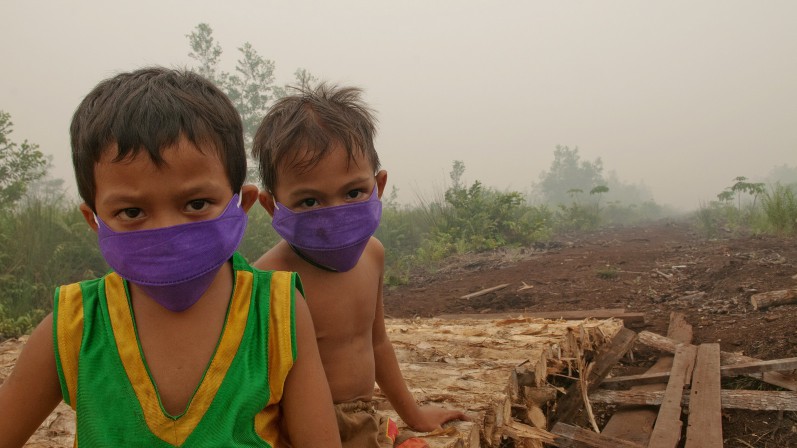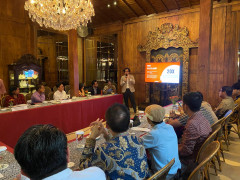Aim for Riau Peatland Restoration
By Romes Irawan PutraMaintaining Local Wisdom While Implementing Regulations: Polemics of Clearing Land by Burning
Some time ago, there were tension and misunderstandings between the Dayak community and the National Disaster Management Agency (BNPB). This was triggered by a statement from BNPB officials that the tradition of gawai serentak triggered land and forest fires in West Kalimantan. Gawai is a tradition in West Kalimantan to celebrate the harvest. As a result of this statement, the Alliance of Indigenous Peoples of the Archipelago (AMAN) of West Kalimantan issued a subpoena to BNPB and gave a statement clarifying that the tradition of gawai has been practiced for generations without causing any fire. The tension dissolved after BNPB apologized.
The existence of communities that clear land by burning, even on peatlands, is considered to be one of the factors that cause forest and land fires (karhutla). Most of the land clearing methods by burning are part of the people’s traditions that have been passed down through many generations.
To maintain this tradition, the government has made regulations so that the local community's wisdom regarding land clearing is maintained but does not cause widespread impact on the environment, especially on the peatland ecosystem. The main regulation on land clearing by burning is contained in Law No. 32 of 2009 concerning Environmental Protection and Management. In this piece of legislation, there is a provision that everyone is prohibited from performing land clearing by burning. Government Regulation No. 57 of 2016 concerning Amendments to Government Regulation No. 71 of 2014 concerning Peatland Ecosystem Protection and Management also mentions a ban on burning peatlands.
Nevertheless, the implementation of these prohibition provisions requires caution because in the clarification of Law 32/2009 itself there is a provision stating that land clearing by burning must pay attention to local wisdom in each respective area.
However, there are restrictions in the implementation of this local wisdom, namely that the burning of the land can only be done up to a maximum of 2 hectares per head of family, with the goal of planting with local varieties, and surrounded by firebreaks so that the fire does not spread.
In addition to Legislation, laws relating to land clearing with local wisdom also exist at the ministry level. Said law is the Regulation of the Ministry of Environment No.10 of 2010 concerning Mechanisms for Preventing Pollution and or Environmental Damage Related to Forest and/or Land Fires. This regulation gives legitimacy to indigenous tribes to clear land by burning. However, this action is limited to a maximum area of 2 hectares per head of household and there is an obligation to report to the village head.
At the regional level, there were also several regulations related to land clearing in accordance with local wisdom published before Government Regulation No. 71 of 2014. For example, Governor Regulation of Central Kalimantan No. 52 of 2008 concerning Guidelines for the Clearing of Land and Yards For Communities in Central Kalimantan as amended by the Governor Regulation of Central Kalimantan No. 15 of 2010. In this regulation the clearing of land and yards by burning must first obtain permission from an authorized official, namely the sub-district head, village head or Ketua RT.
With the abovementioned limitations, the implementation of regulations relating to land clearing by burning requires good and coordinated supervision so that protection of local wisdom is not misused for other interests that harm the environment in the future.




